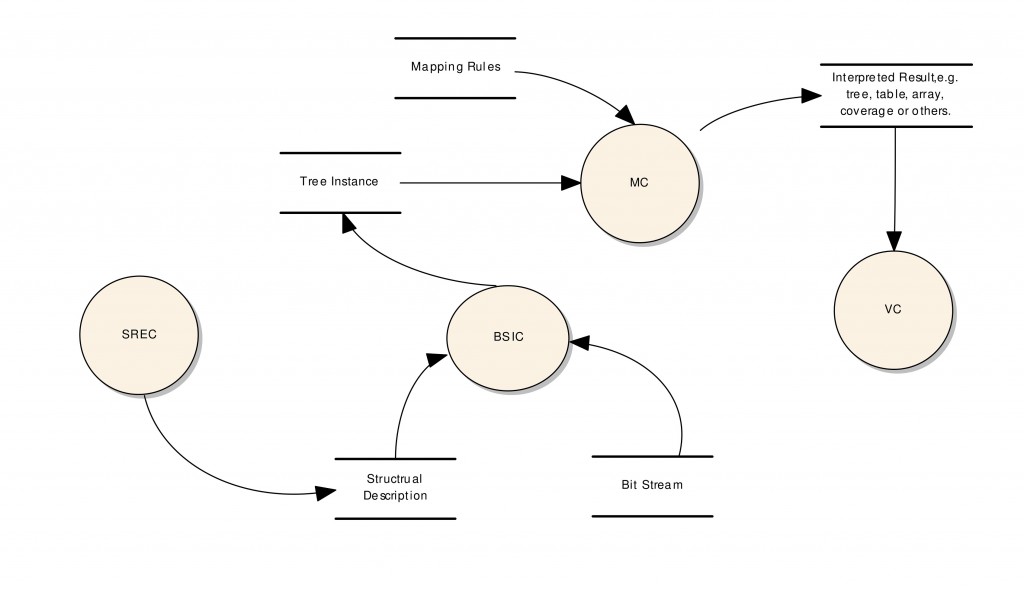 The SCIDIP-ES Data Virtualization Toolkit (DVT) uses the concept of Open Archival Information System (OAIS) Representation Information RepInfo to provide the support to explore the structure and contents of a digital data object in a format independent manner. RepInfo is defined in OAIS as the additional information that maps a Data Object into more meaningful concepts. OAIS further categories RepInfo into three main types:
The SCIDIP-ES Data Virtualization Toolkit (DVT) uses the concept of Open Archival Information System (OAIS) Representation Information RepInfo to provide the support to explore the structure and contents of a digital data object in a format independent manner. RepInfo is defined in OAIS as the additional information that maps a Data Object into more meaningful concepts. OAIS further categories RepInfo into three main types:
- Structure
- Semantic
- Other
Structure RepInfo describes the format or data structure concepts expressed as mapping rules for mapping the digital bits sequences into data types, and then to higher level concepts needed to understand a digital Data Object. DVT uses Structure RepInfo in specific to facilitate format independent access to preserved data. A typical data flow diagram for DVT is shown below:  DVT design is based on the bit stream interpretation API, e.g. Data Request Broker (DRB) API is used in this implementation, to provide a software abstraction layer that helps developers to abstract data format specific concerns from their analysis or data access applications. Abstraction is achieved using the physical data object model and standardized ES models. See this case study of using DVT in facilitating Earth Science (ES) data interoperation.
DVT design is based on the bit stream interpretation API, e.g. Data Request Broker (DRB) API is used in this implementation, to provide a software abstraction layer that helps developers to abstract data format specific concerns from their analysis or data access applications. Abstraction is achieved using the physical data object model and standardized ES models. See this case study of using DVT in facilitating Earth Science (ES) data interoperation.
- Detailed documentation
- Try it out at: [simple-links category=”15″]
- Download the latest release of the DVT software for installation at your own premises: http://nexus.scidip-es.eu/content/repositories/releases/eu/scidipes/toolkits/datavirtualizationtoolkit/DVT/